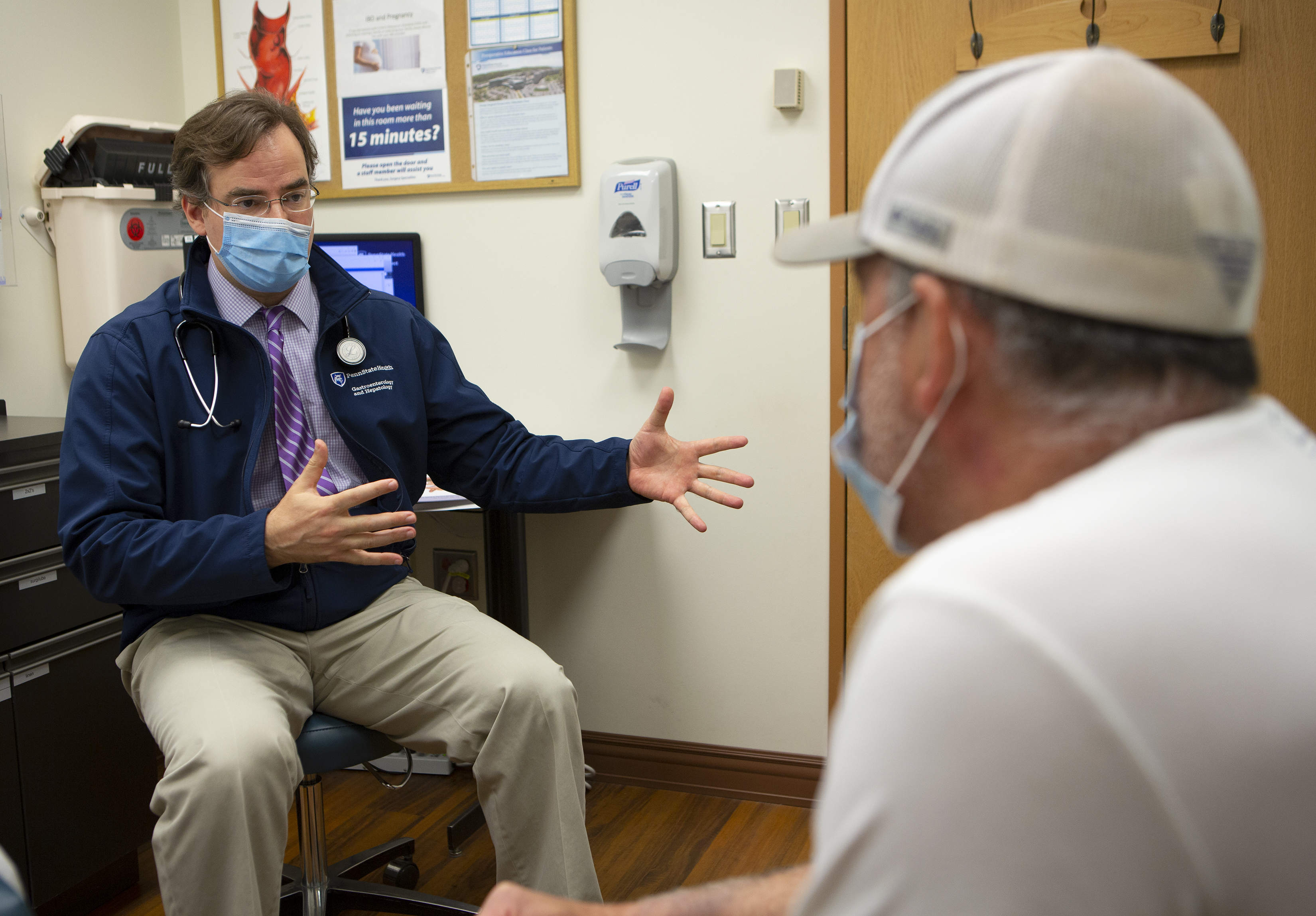Patient screenings and face masking
Wherever they seek care, patients will encounter new procedures to ensure their safety and that of care providers, staff and other patients. Many will experience these before they arrive at their appointment.
“When our patients first call to schedule an appointment at any of our offices, outpatient clinics or centers, they’ll be screened for COVID-19,” explained Dr. Matthew Silvis, vice chair of clinical operations in the Department of Family and Community Medicine at Penn State Health Milton S. Hershey Medical Center. “This means being asked questions about their possible risk factors of having the coronavirus.” The scheduler may also collect additional information over the phone to reduce the amount of paperwork needed at the time of the visit.
As patients arrive for their appointments, they can expect to be screened more fully for COVID-19. In addition to be being asked about their possible exposure and any symptoms, they’ll have their temperatures taken. They’ll also be required to wear masks that cover their nose and mouth before they can enter the facility. Inside, doctors, nurses and office staff — who are screened daily for COVID-19 — will be wearing face masks. Some may also wear face shields for additional protection.
Changes to check-in, visitors, waiting areas and check-out
Check-in now looks different too, according to Dr. William Bird, a senior vice president in Penn State Health Medical Group. “We’ve eliminated a lot of chairs in the reception area, and spaced out the remaining chairs,” Bird said. “Our understanding of COVID-19 continues to evolve and we now know that length of exposure is an important factor. So, we’re also minimizing the time that people spend in waiting rooms, trying to get them from car to exam room as quickly as possible.”
Some practices may have their patients check-in for their appointment from their cars and remain there until they can be seen by their doctor, said Bird, adding that other practices may send patients straight to a patient room to wait for their provider there.
Before COVID-19, patients were typically able to bring friends or multiple family members with them to their appointments. Now, in most instances, visitors are not permitted to accompany adult patients to their appointments or even be allowed in waiting areas. Some providers, including those within Penn State Health, allow one family member or support person per adult patient, and one parent or guardian per pediatric patient. These individuals will also be screened for COVID-19 and required to wear masks.
Usually, doctors’ appointments end with patients stopping by a check-out area. “At our practices, when you’re done seeing your provider, you’re done. You get to leave,” Silvis said. “Someone with the office or clinic will call to arrange any follow-up lab work, consultation or appointments.”
Enhanced cleaning
Common areas as well as high-touch areas such as door handles, tables and chairs are cleaned and disinfected frequently throughout the day for patient safety. Environmental services clean and disinfect patient rooms and procedure areas between each patient visit. “We even have those little cleaning cards that sit on the counter top — like those cards you get in a hotel — that tell patients who cleaned their room,” Bird said.
Some practices, like those with Family and Community Medicine at Penn State Health, are scheduling patient visits at reduced capacity to allow extra time for those enhanced cleaning efforts, explains Bird. “We’re looking at all of our workflow and processes to create the safest environments for our patients.”
Virtual Appointments
While doctors’ offices and outpatient clinics are ready to welcome their patients back with enhanced safety measures in place, telehealth remains a safe and convenient option for many.
“We’ve wanted patients to take advantage of telehealth for many years, but insurance companies wouldn’t cover the service adequately,” Silvis said. “Now, with COVID-19, they’ve seen its many benefits and have stepped in to cover virtual appointments.”
In addition to being a safe option for those who are vulnerable or at a high risk of having COVID-19, telehealth is a convenient alternative to on-site visits for many patients, Bird said. “Chronic conditions like diabetes and hypertension, and Medicare wellness visits can often be done virtually. We also can triage other cases to determine if the patient should be seen in person.”
Both Silvis and Bird believe that many of the changes put in place in the wake of COVID-19 will last long after the pandemic is behind us.
“I think we’re going to come out with better patient experiences in the long run,” said Bird.
The Medical Minute is a weekly health news feature produced by Penn State Health. Articles feature the expertise of faculty, physicians and staff, and are designed to offer timely, relevant health information of interest to a broad audience.
Original post https://alertarticles.info




